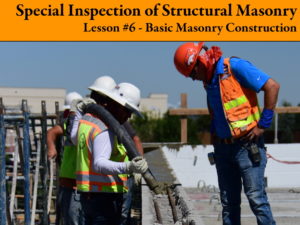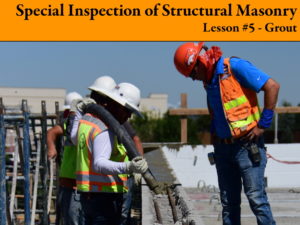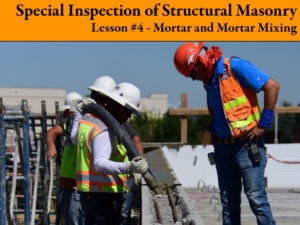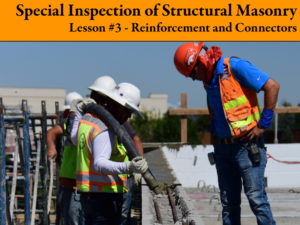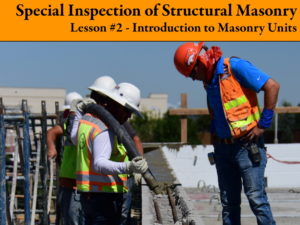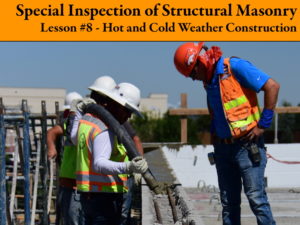
Special Inspection of Structural Masonry #8: Hot and Cold Weather Construction
This lesson is designed to provide an understanding of the effects of hot and cold weather on masonry construction, especially as it pertains to the responsibilities of a Special Inspector. It defines conditions that are considered either hot or cold. As it relates to protecting new masonry, this lesson explains steps that should be taken by the contractor (and verified by the inspector) to prepare for construction, to do during construction, and to do immediately following construction.…


